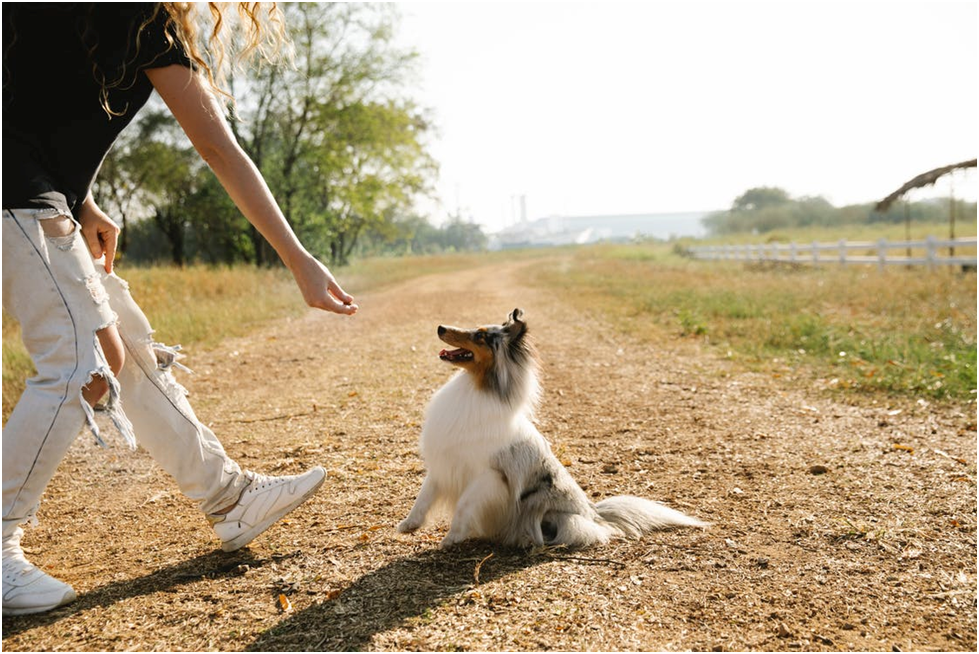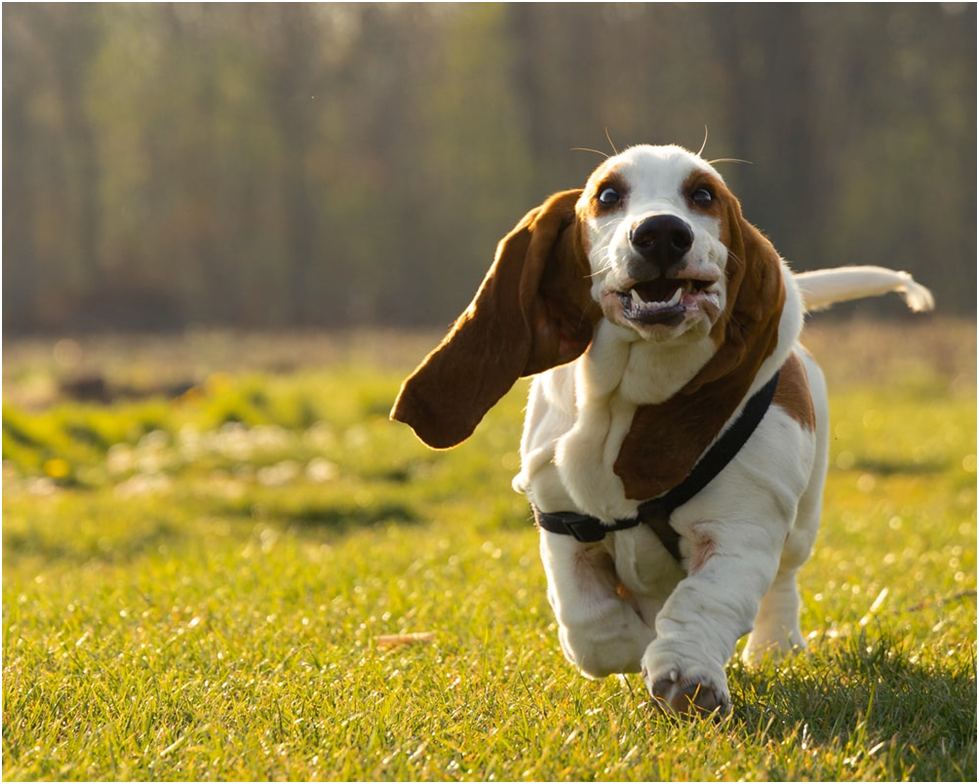One of the exciting aspects of bringing home a dog is naming it. Of course, your dog may not immediately take to the name. But with time, you will see it responding to the name.
Some dogs come bounding towards their owner, tails wagging when they hear their name. Some dogs may react in an understated manner by glancing in the general direction of the owners.
These reactions lead us to the question, do dogs know their names? Do they understand words? Do they associate with their names like humans do? Or do dogs just respond to the tone and pitch of your voice? Or body language?
Let us get started with the article to find the answers to these questions.
What is The History Behind Naming Dogs?
There is a lot of debate in the canine world concerning the domestication of dogs. It is not easy to pinpoint the exact location, but genetic evidence shows that dogs were first domesticated in Eurasia between 14 to 29 thousand years ago.
The act of naming dogs can be traced back to ancient Greek civilization. For example, it is ‘Cerberus,’ a pet of Hercules, that guards the gates of Hades. Dogs were typically given short names inspired by aspects like power or beauty. Some famous names included Lance, Killer, Fury, Dagger, Dash, and Swift.
During medieval times dogs were primarily used for activities such as hunting, herding, or guarding. Therefore, they were named based on their physical features or characteristics. For example, medieval dogs had names like Study, Nosewise, and Whitefoot.
In the 1800s, the idea of dogs being a part of the family began to take shape. And thus, they were given names such as Albert, Myrtle, Dante, and Aurelia.
Today, dogs are considered the children of the family. So, it is common for one to find the same names that are popular among both dogs and babies – for example, names like Bella, Archie, Luna, and Ollie.
Do Dogs Know Their Names?

You have carefully and lovingly chosen a name for your dog. Your dog does look up to you or sprint towards you when you call its name. But does that mean the dog specifically recognizes its name? The answer is no; it does not.
For example, you have named your dog Alfie. When you call out Alfie, it may respond to your call. In its mind, though, the dog is not thinking, ‘Oh, my name is Alfie, and I am being called .’ Alfie is just a word for the dog that it should respond to.
For humans, a name carries significant importance. Your name is tied to your concept of self. It is your identity among people. That is, however, not the case with dogs. As disappointing as it may sound, dogs do not really care what you name them. For them, a name is a sound that you make to get their attention.
Dogs are intelligent creatures. An average dog is considered to have the same intelligence level as that of a two-year-old baby. So they can remember words. They know their name is being said in their presence. And something good is coming out of it.
For example, in the morning, if you say, ‘Hi Alfie, are you hungry?’ Your dog is not sitting there thinking you called out its name but more like, ‘Am I going to be fed now?’ So it is not the name it is interested in, but what follows after you say their name.
Dogs do not associate a sense of identity with it. No evidence says they like one name better than the other. So, if you want, you can change the dog’s name and train it to respond to its new name.
How Do Dogs Learn Their Name?

The purpose of naming your dog is to create a reliable call method. When you say the name out loud, your dog should respond to the sound. It may not recognize the word specifically as its name. But the dog still needs to learn and remember the word in order to respond to it.
The two ways dogs can learn their names are: Classical and Operant conditioning.
1. Classical Conditioning
Classical conditioning makes use of implicit memory. It is a type of memory that you can recall without much effort; it is almost involuntary. For example, when someone calls your name, your immediate reaction is to respond with a yes or look up to see who is calling you.
The famous experiment by Ivan Pavlov is a good example of conditional learning. The dogs were first made to hear the sound of the bell. They showed no response. Next, when they were shown food, they salivated.
The dogs were repeatedly first presented with the bell and then the food. Finally, at the end of the experiment, the dogs started salivating just at the sound of the bell.
2. Operant Conditioning
While classical conditioning aims to strengthen involuntary behaviors, operant conditioning works on using voluntary behaviors. Dogs learn by understanding that a specific behavior can lead to positive consequences or negative.
This way, you can encourage good behavior or lead the dog away from undesired behaviors.
So, if calling a dog’s name results in cuddles or treats, it will learn that responding to the specific sound you make is in its best interest.
You will have to employ both these methods simultaneously and repetitively when training the dog to learn its name. It will require a lot of patience, effort, and love from you. However, you can help your dog learn its name with consistent effort.
How Can You Train a Dog to Learn Its Name?

Do dogs know their name? Well, no, but you can surely teach the dog to come to you when its name is being called out.
We recommend setting time apart for a training session daily. You will be using both conditional and operant conditioning methods.
1. Use its Favorite Toy
Does your dog have a favorite chew toy? Use it for conditioning. For example, you can apply the techniques of Ivan Pavlov. When you first call the day by its name, it naturally will not respond. Now, show the dog its favorite toy.
Next time, call out the dog’s name and then wave or dangle the toy in front of it. It will get excited at the sight of its favorite toy. You can also try putting some distance; sit in a different room and call for the dog.
Repeat the process consistently over a period. With this technique, the dog will learn to involuntarily get excited and find you when it hears its name.
2. Use Treats
Another way you can train the dog to learn its name is by giving it premium quality treats. For example, call the dog using its name. If the dog looks at you, reward it with a treat with a big smile on your face. Then, call the dog again, and give it a treat if it looks at you.
As with every training method, repeat the process a few times over multiple days. Eventually, the dog will learn that looking at you when you make that specific sound leads to treats. So it knows that its behavior leads to a positive consequence.
It necessarily does not have to be toys or treats. You can pet the dog, cuddle or give it belly rubs. The key to this learning process is creating positive associations with the dog’s name.
Please do not get angry or punish your dog when it does not respond the way you want to its name. Negative experiences will confuse the dog or instill fear. For example, instead of coming to you, the dog might run away at the sound of its name.
Also Read: My Dog is 6 Months Old and Not Potty Trained! Still!
How to Choose a Name For Your Dog?

You might be tempted to name your dog something funny, keeping it in line with pop culture. Or you might want an uncommon and cool name that pops from the crowd of usual names. But, the more offbeat or long the name is, the more difficult it will be to teach the dog.
Before choosing a dog’s name, consider the factors mentioned below.
1. Select a Name that Ends With a Vowel
When it comes to hearing senses, dogs fare much better than humans. This helps them distinguish among frequency ranges better. Names that end with vowels can easily catch your dog’s attention. Such names as Ollie, Tessa, Leo, Ace, Ellie, and Dixie would be good for a dog to learn and remember.
2. Stick to Single or Double Syllables Names at Best
Choose simple and short names. If the name is too long, the dog will not understand it. And there are high chances that you itself will shorten the long name with a nickname. For example, names like Cordelia and Gertrude may not be such a good idea. Yes, the name ends with a vowel, but the long and tongue-twisting names can confuse the dog.
3. Pick Different Names for Your Pets
If you have two or more pets at home, ensure their names sound different. Similar sounding names can again get confusing. For example, the names Ellie, Tilly, and Kelly have a similar ring to it. Calling out one name can have all three pets rush toward you.
4. Do Not Confuse Names with Commands
Dogs may be able to learn their name and learn to obey commands. But expecting them to differentiate between commands and similar-sounding names is too much. For example, ‘sit‘ is a typical obedience command. Now a name like Pitt or Kit can be easily confused by the pet. It will not know when you are calling for it or commanding it to sit.
Can Dogs Learn and Remember Other Words?

According to studies, an average dog can learn and remember up to 89 words. Newer studies have found that some exceptional dogs around the world can learn around 12 new words in a week.
Some of the common words and phrases that dogs tend to respond to the most are sit, stay, good boy/girl, no, leave it, wait, and fetch, among others.
Dogs use the sound of the word and pitch of your voice to make sense of what you are saying. The more you use the words daily, the more quickly the dog will be able to pick them up. Even with names, it is best to maintain a similar tone when calling the dog.
Apart from words, dogs can also pick on gestures. For example, if you simply point, the dog is likely to look in that direction.
Summary
Do dogs know their names? A dog will respond when its name is called. It can come to you or look in your direction. But, dogs do not associate with names like humans do. Their name is not attached to their sense of self but rather a sound they learn to respond to.
When picking a name for your dog, consider keeping it short, with a minimum of one or two syllables. Long and difficult to pronounce names can confuse the dogs.
When teaching your dog its name, aim to create positive associations. Help it understand that responding to the sound of its name can lead to good things. If you have any difficulty training the dog, feel free to seek help from professional trainers.
Elena Gherman is a highly skilled and knowledgeable animal care expert. At the start of her career, she gained practical expertise with multiple animals. In addition to that, she works as a DVM veterinary editor for Joy Pet Products, which focuses on offering reliable information on pet health and wellbeing. She meticulously reviews each piece of writing before it is published to make sure pet owners get the most precise and updated information possible.
